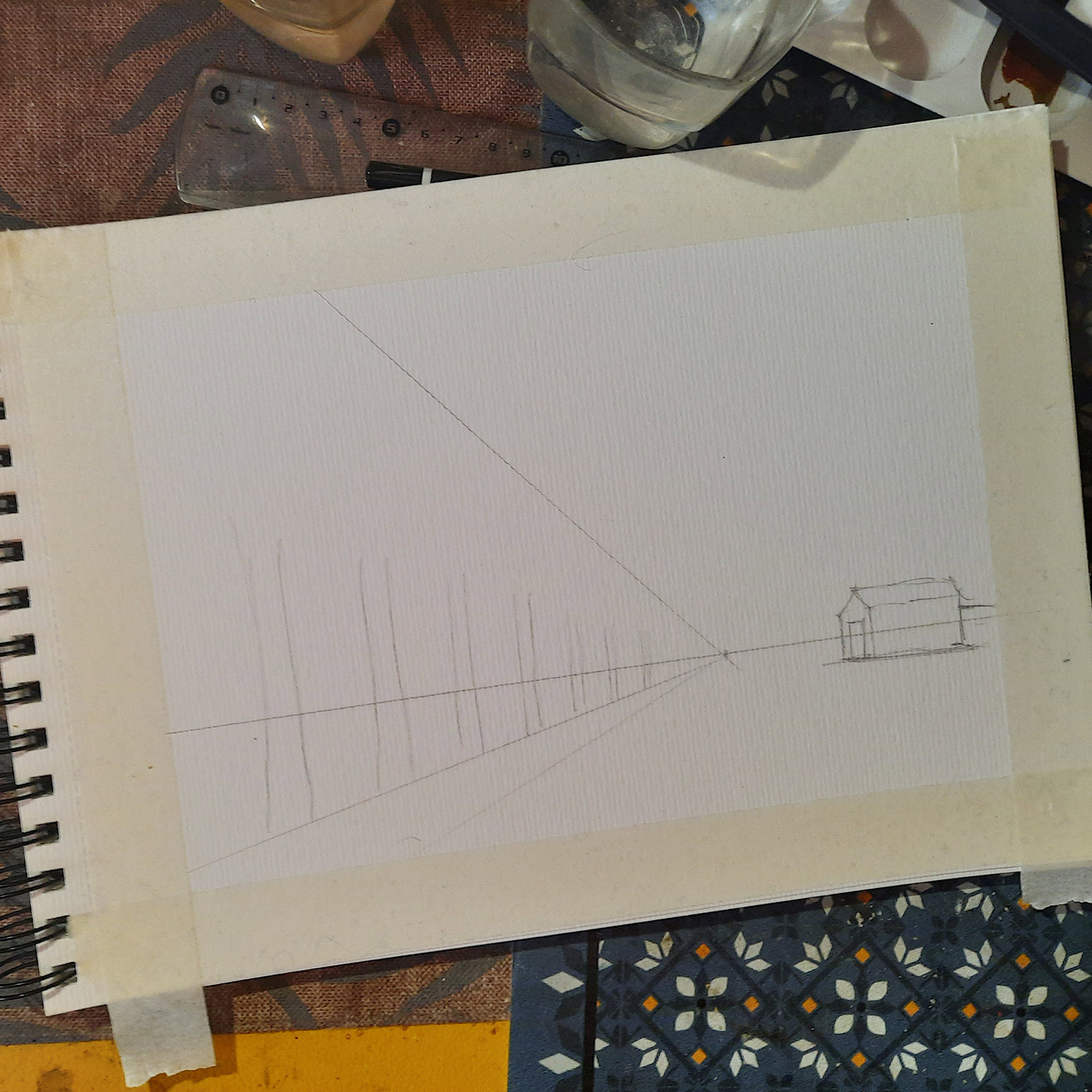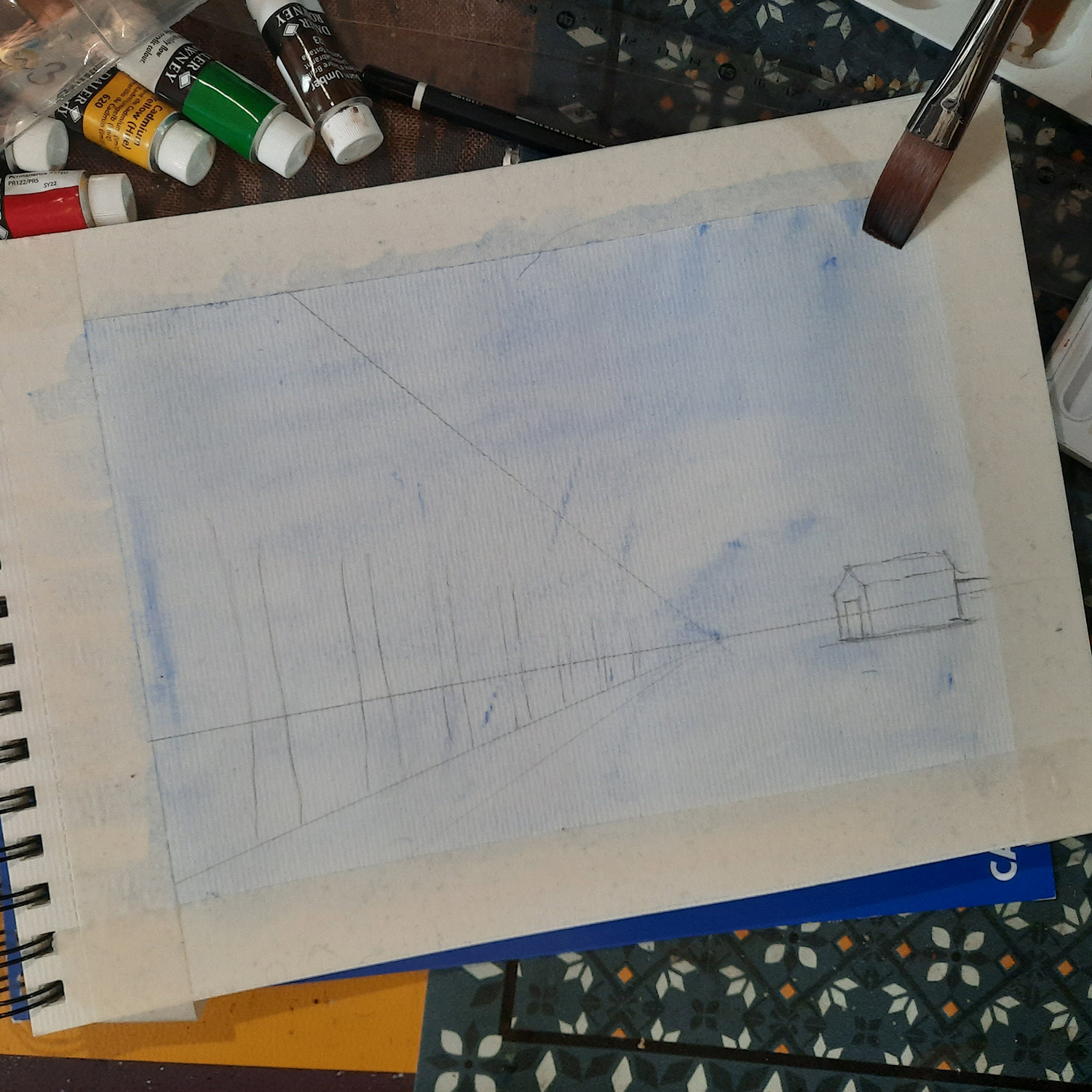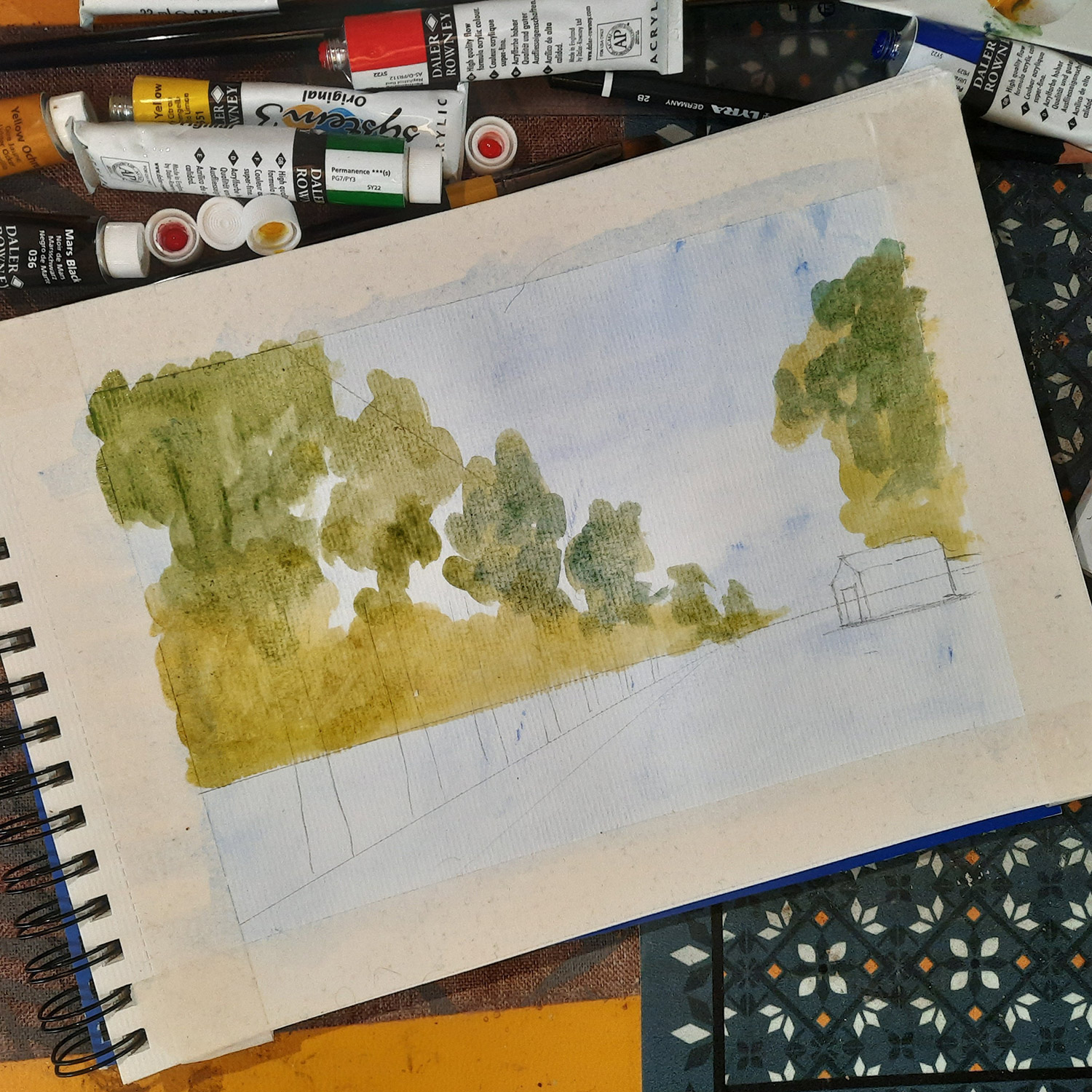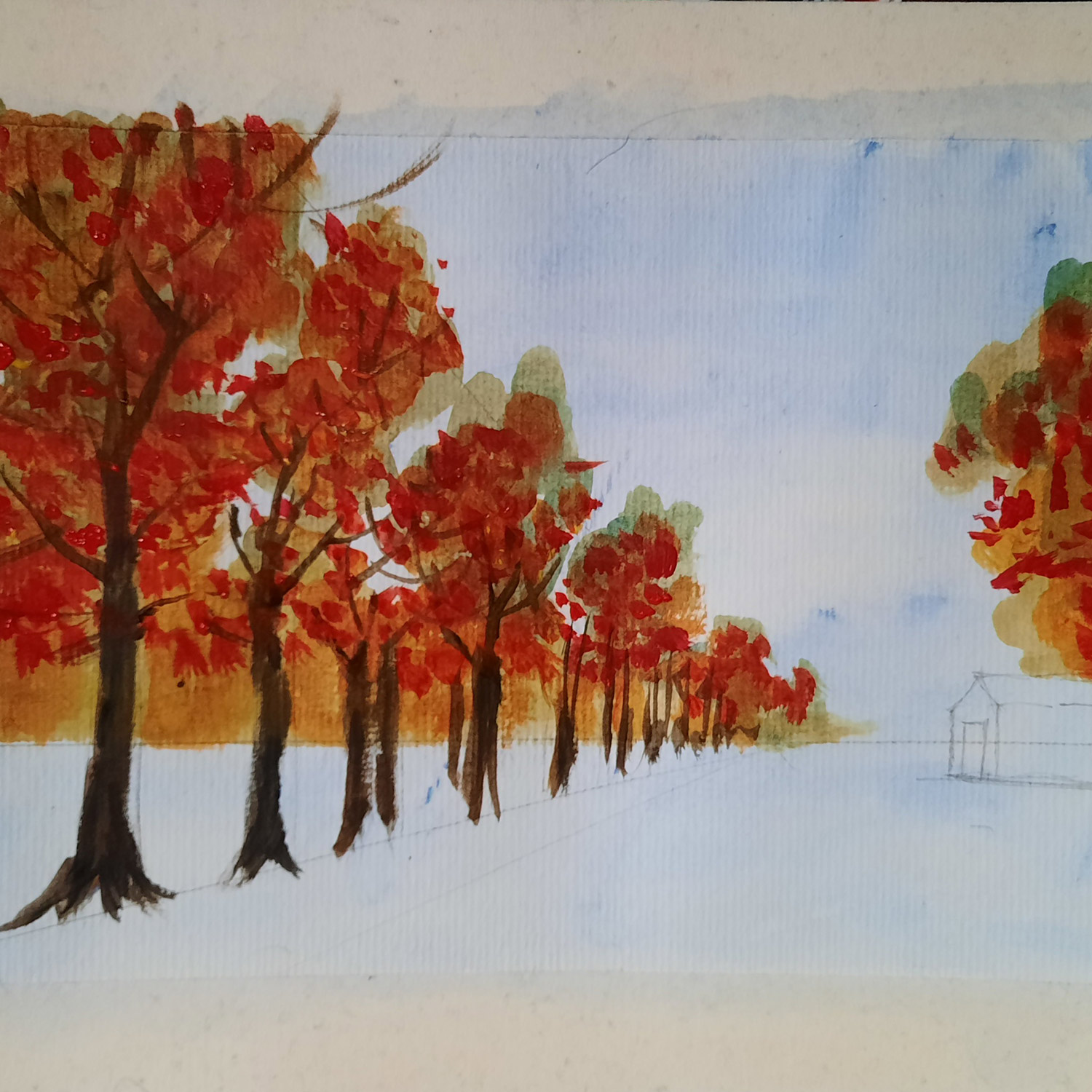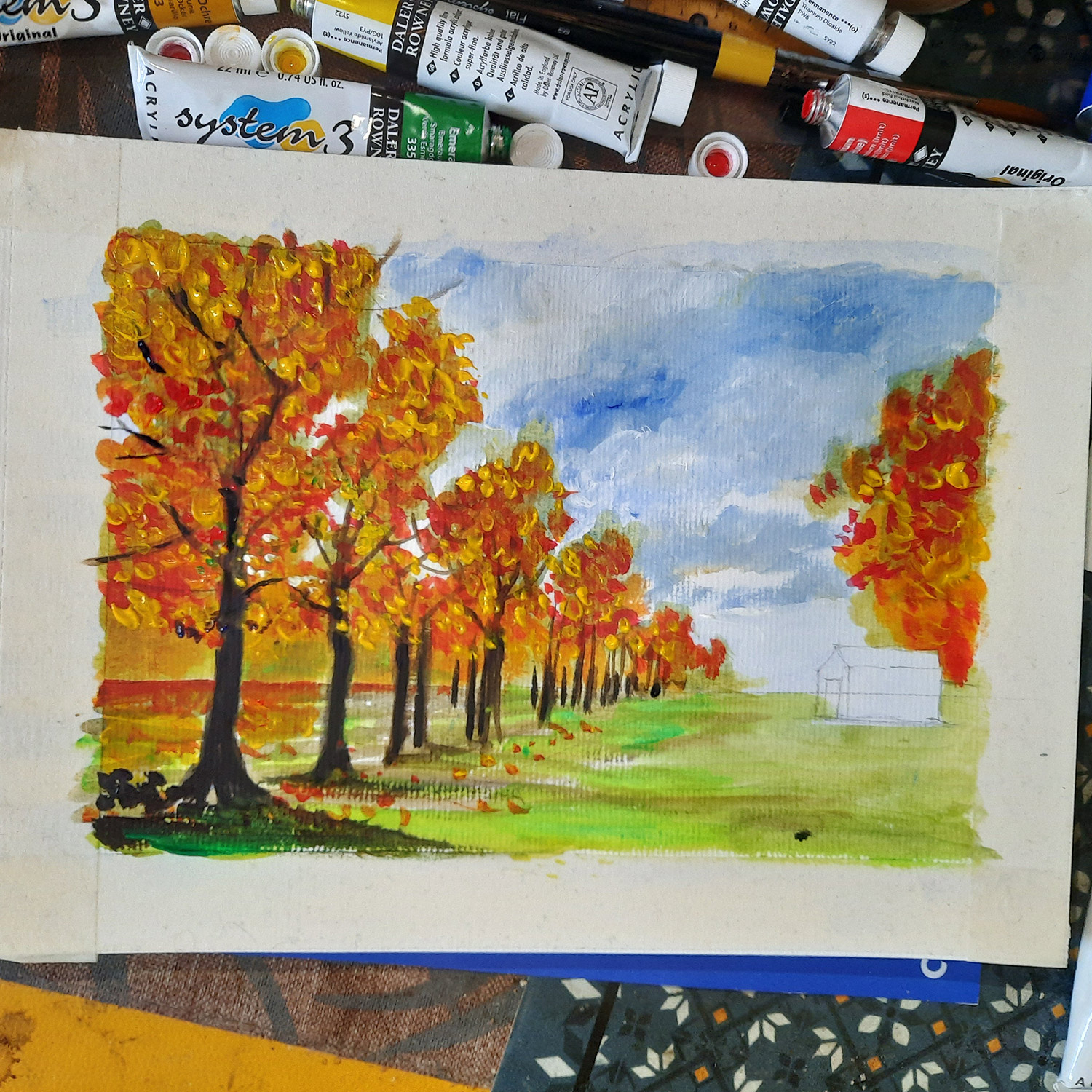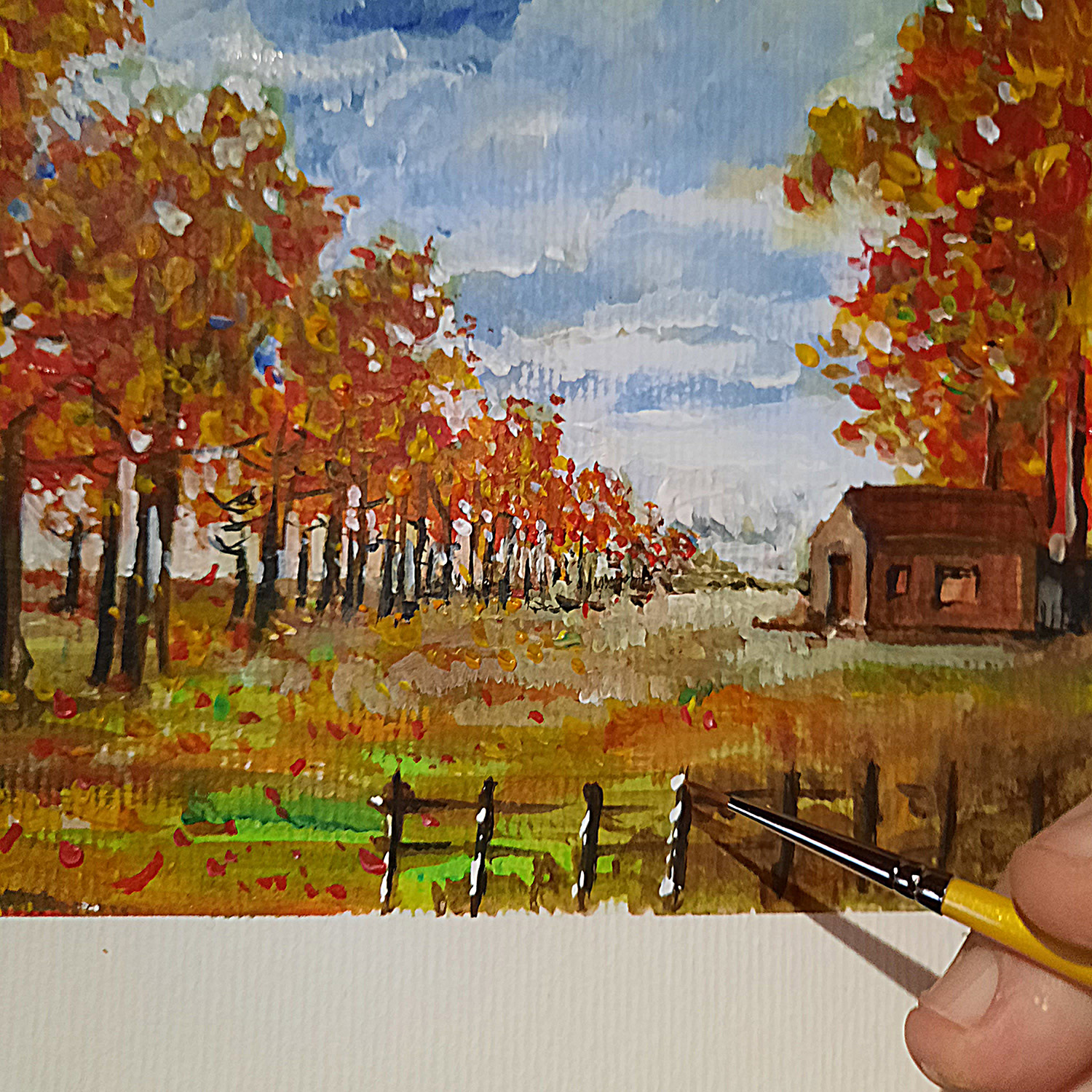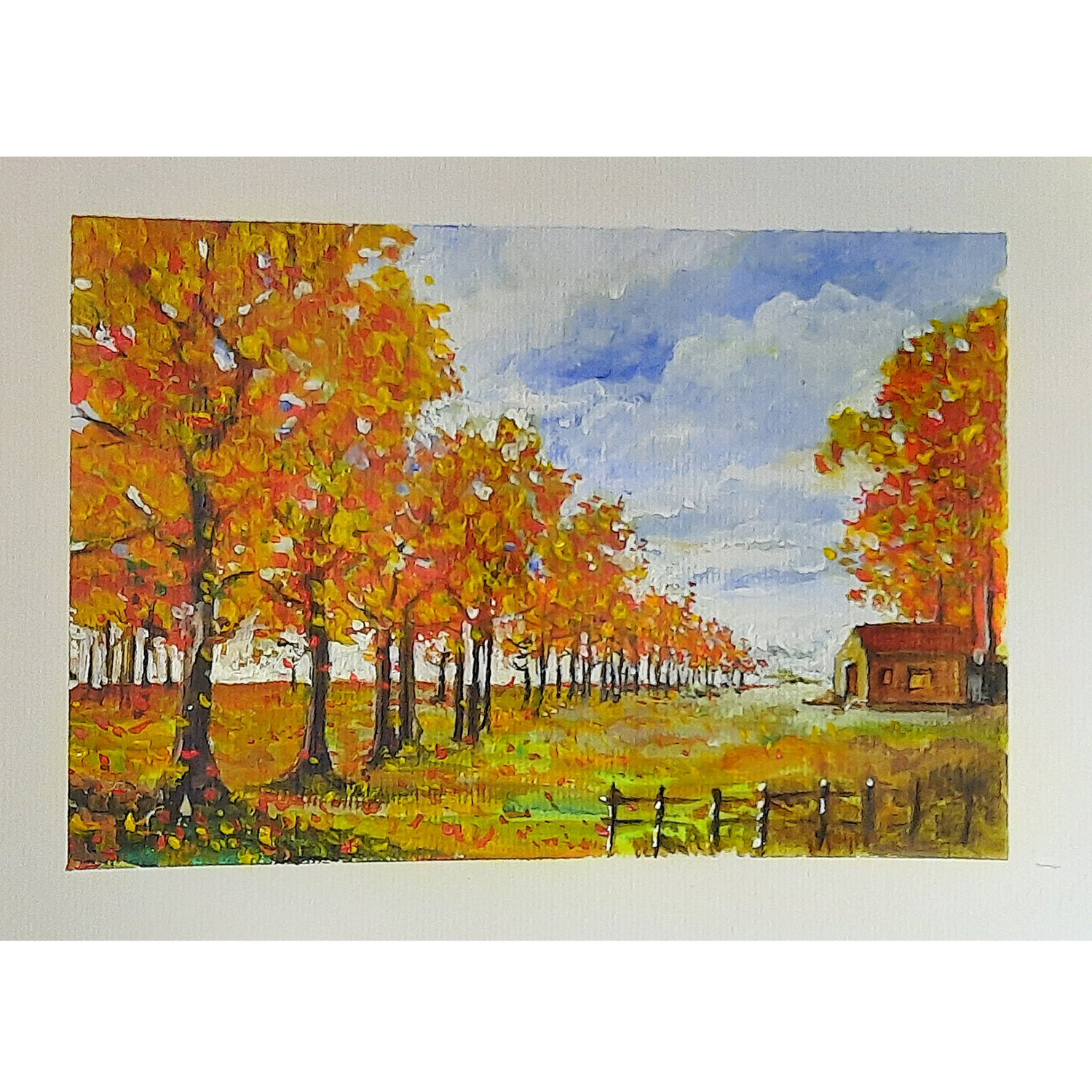
This brightly coloured landscape, created in 8 steps, is a great starting point to master colour mixing and a simple yet effective technique known as "fat over lean"
Time required: 2 hours
Materials used:
• Paper: Canson XL Mixed Media Textured
• Colours: Daler-Rowney set of 10 System 3 Acrylic colours; Daler-Rowney Aquafine watercolours for the blue background.
• Brushes: Graduate System 3 set (500)
• Pencil: Lyra 2H
• Accessories: 2 pots of water, rubber, ruler, repositionable tape, cloth.
